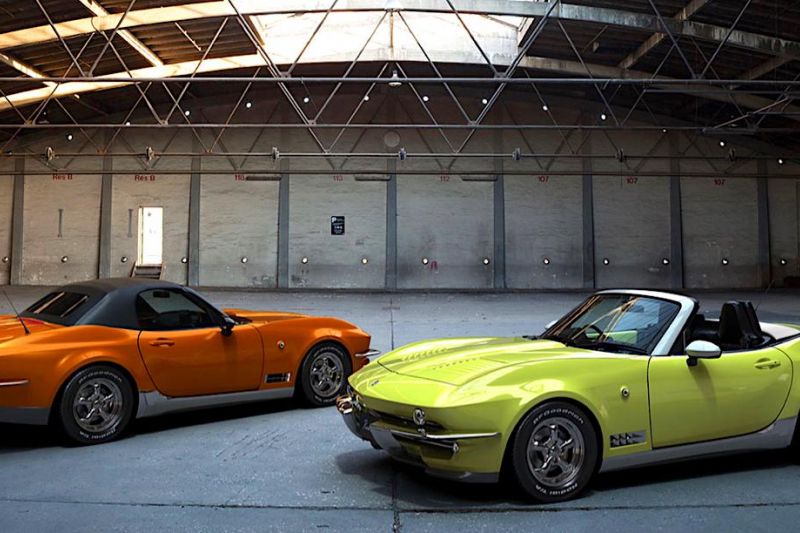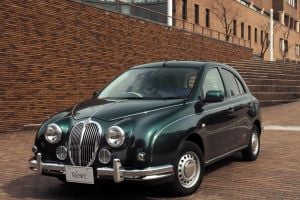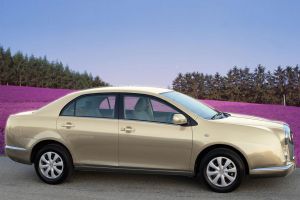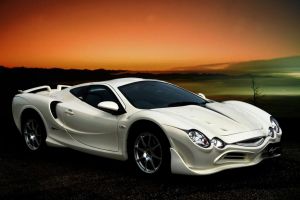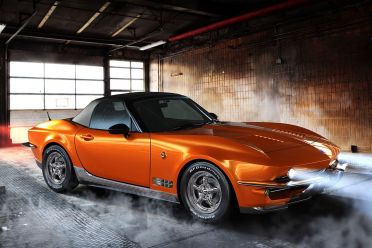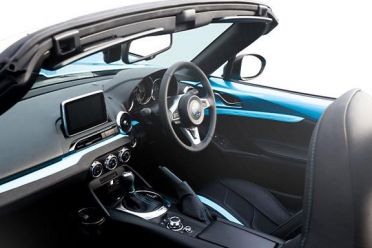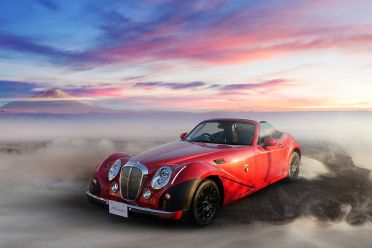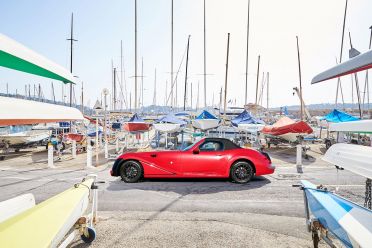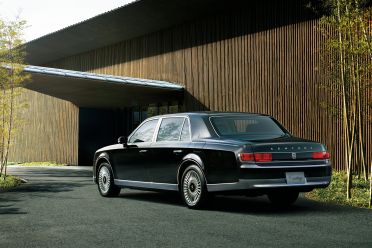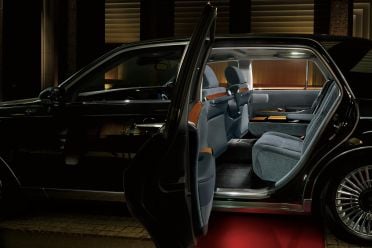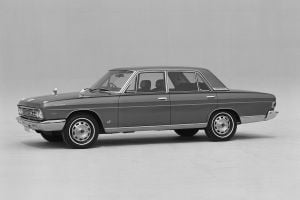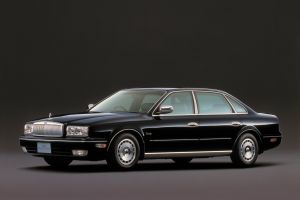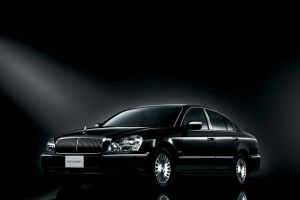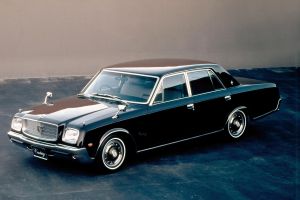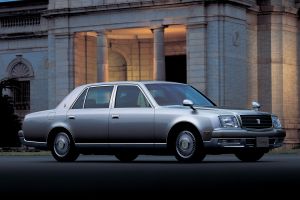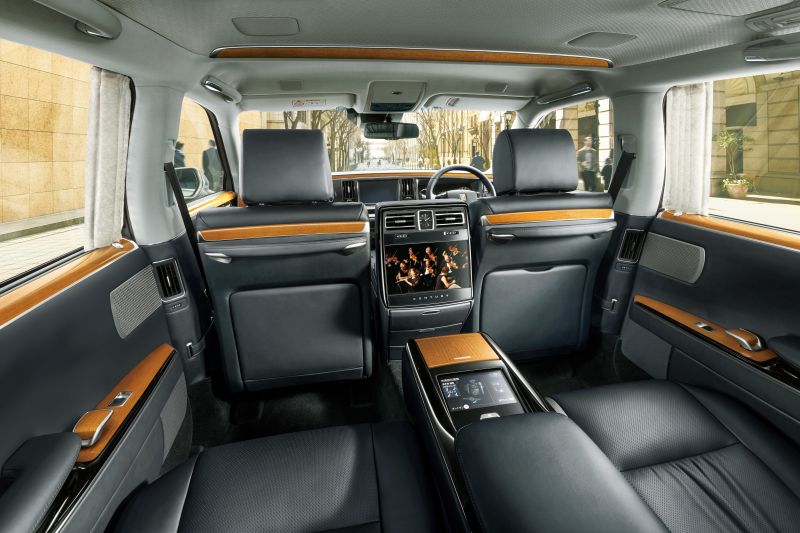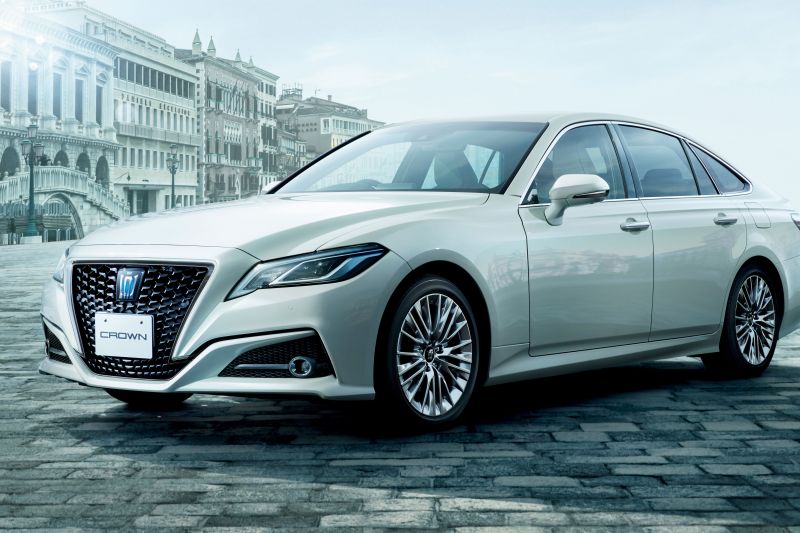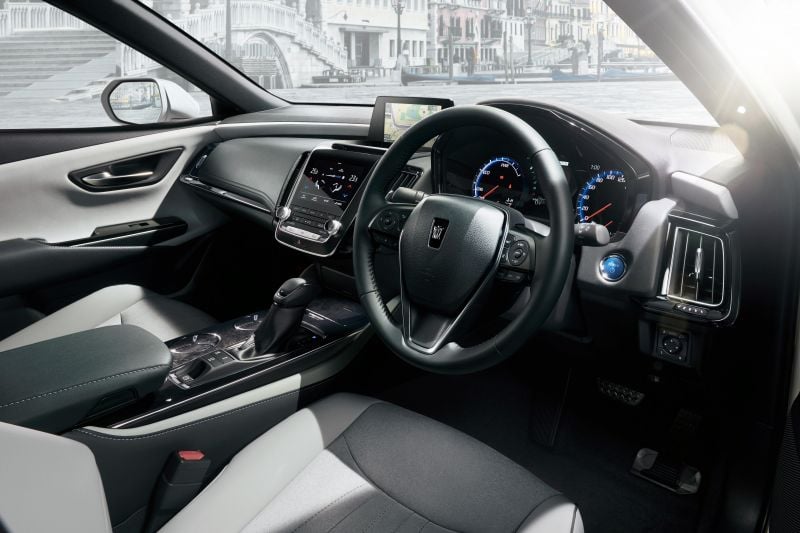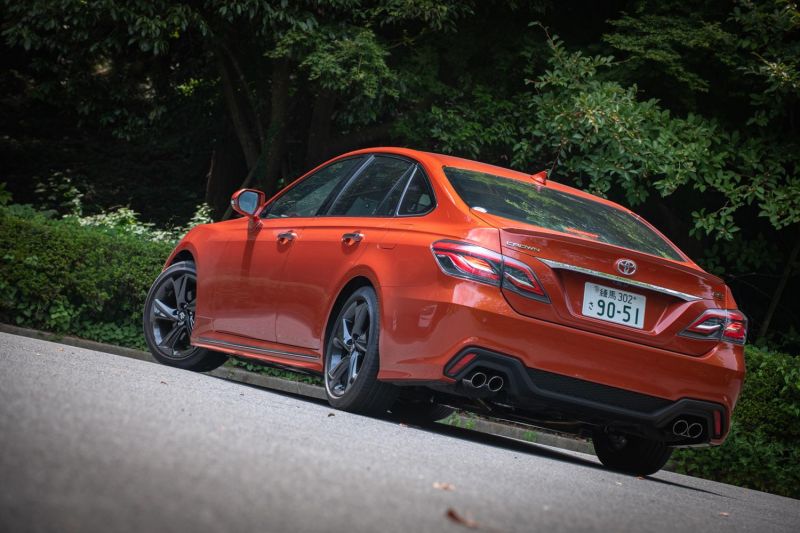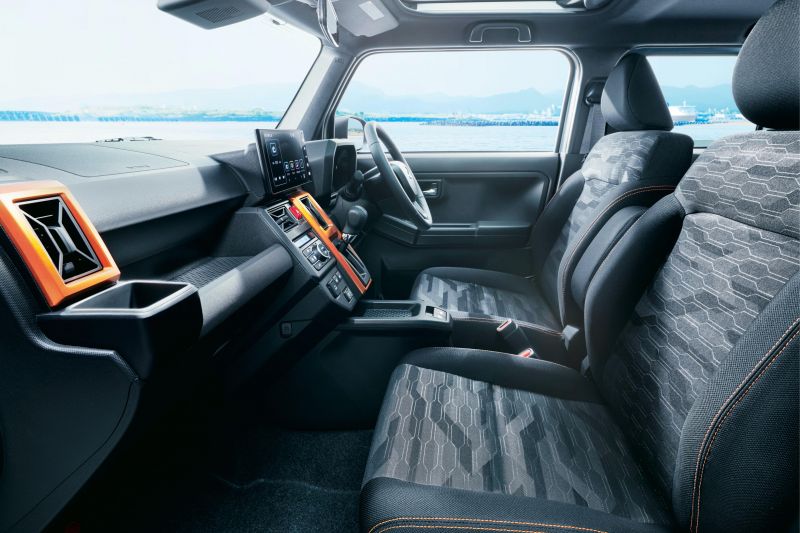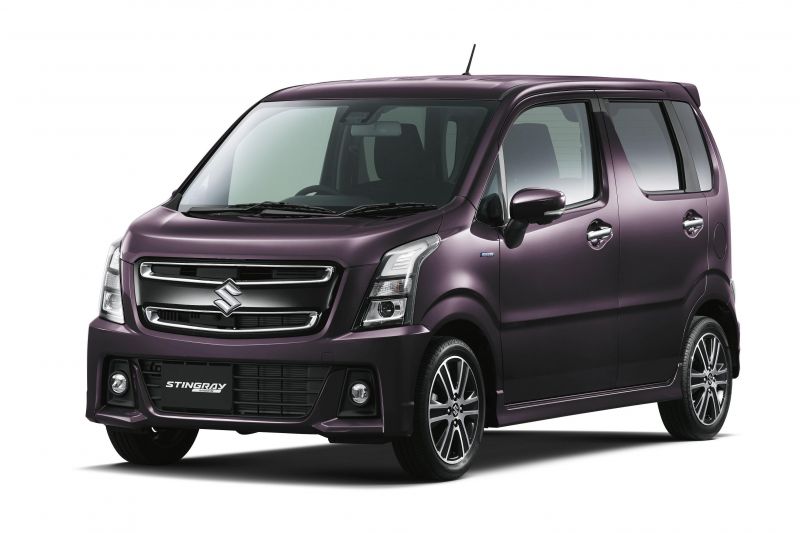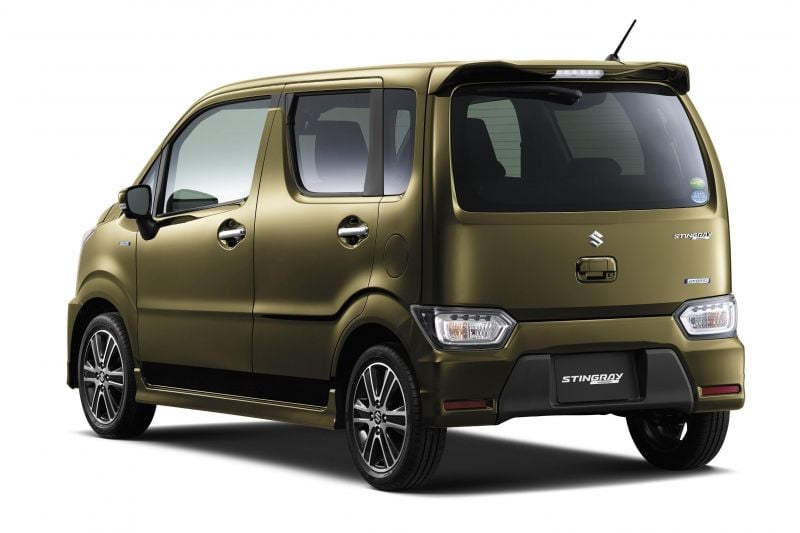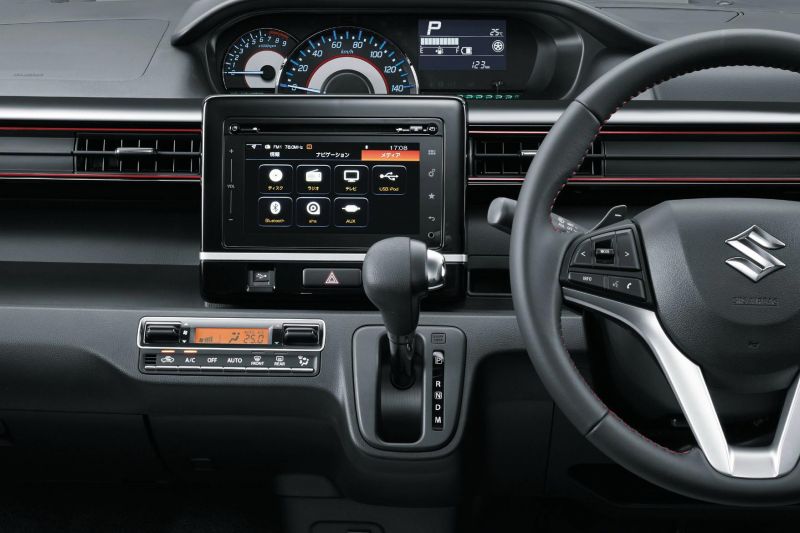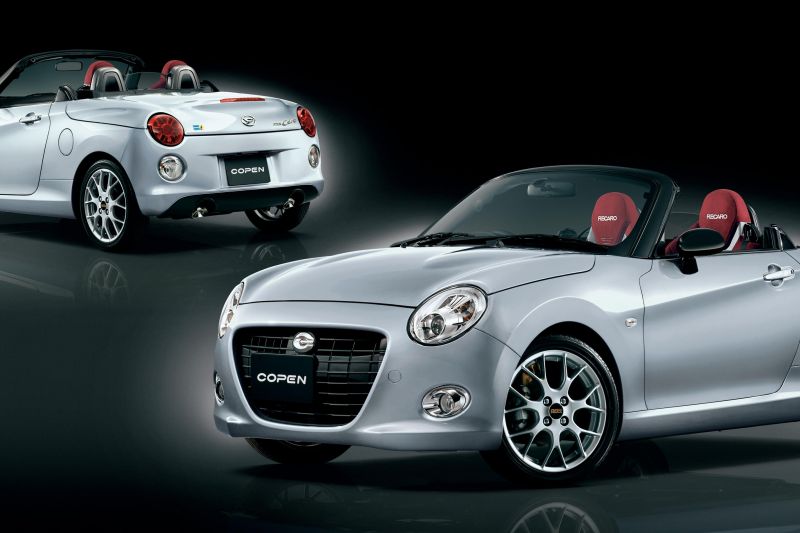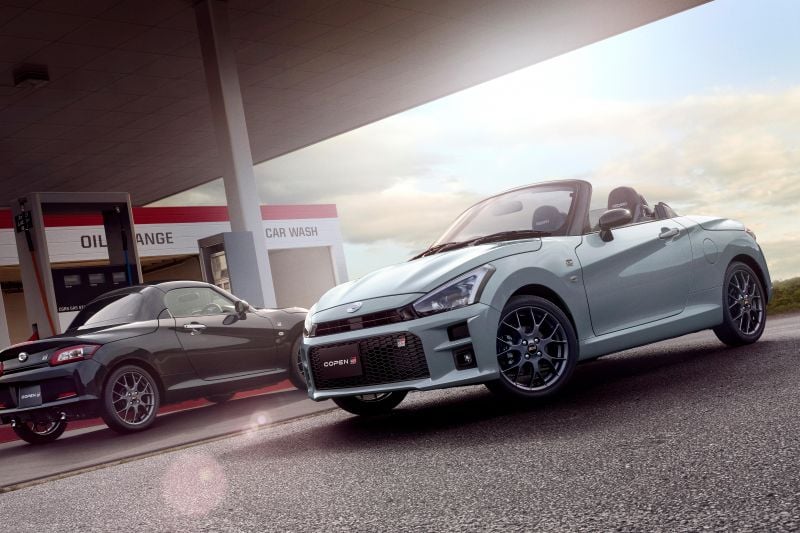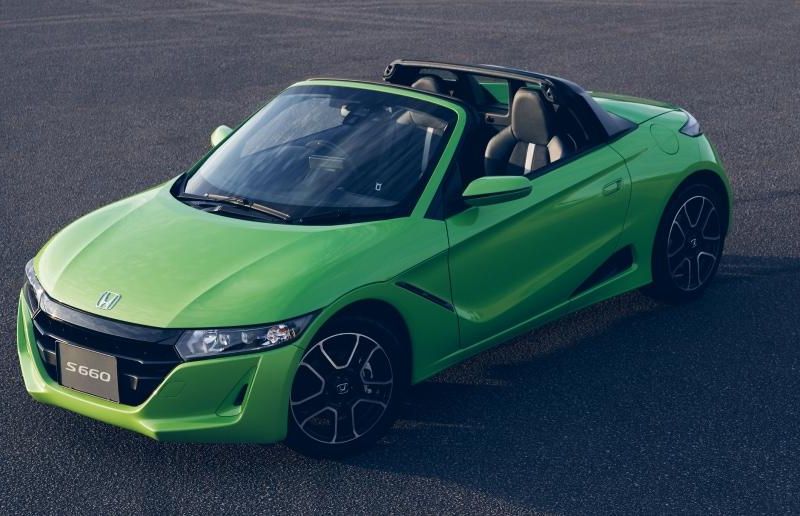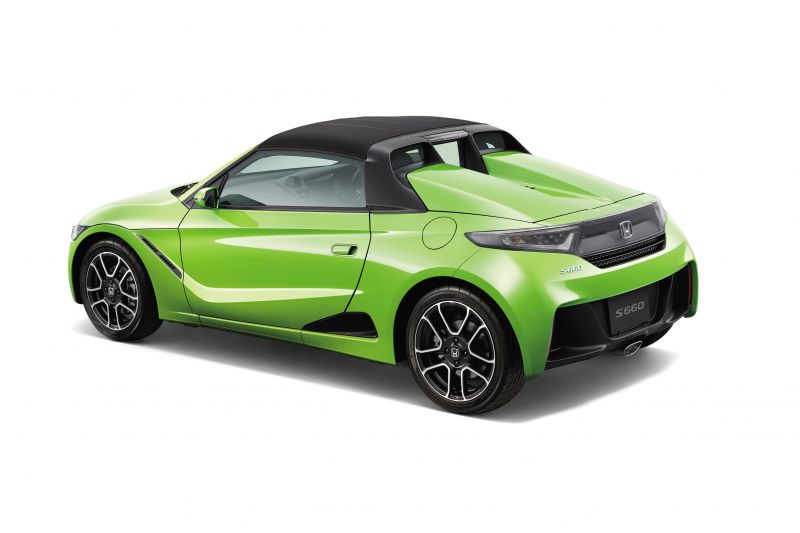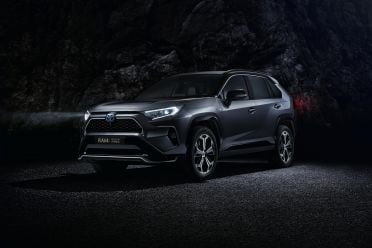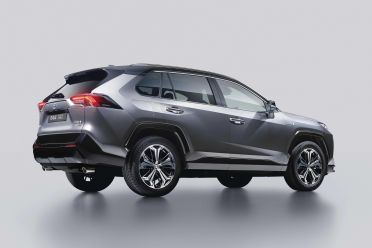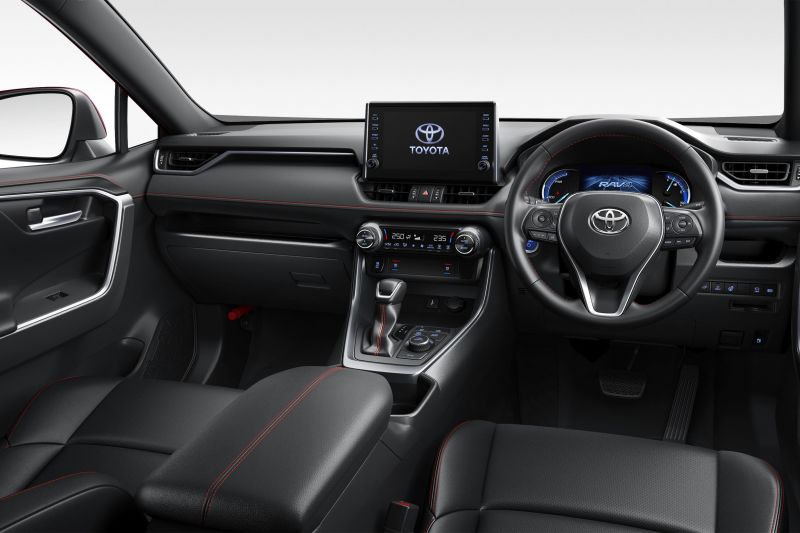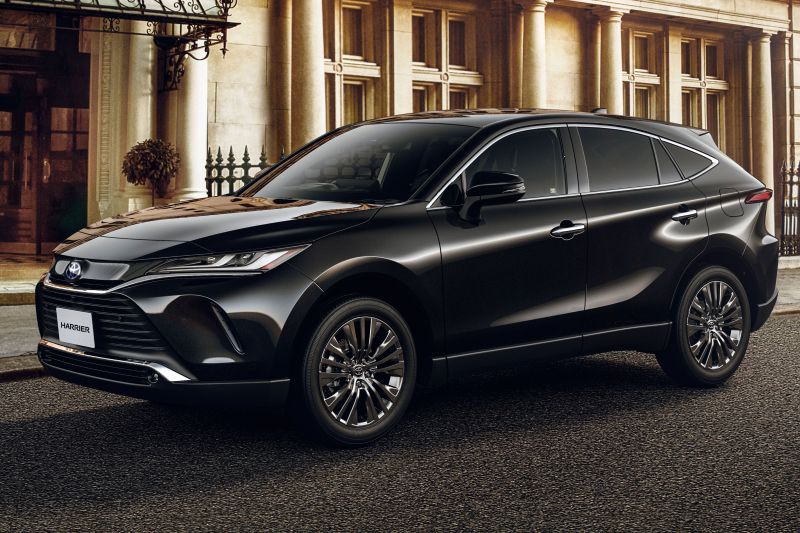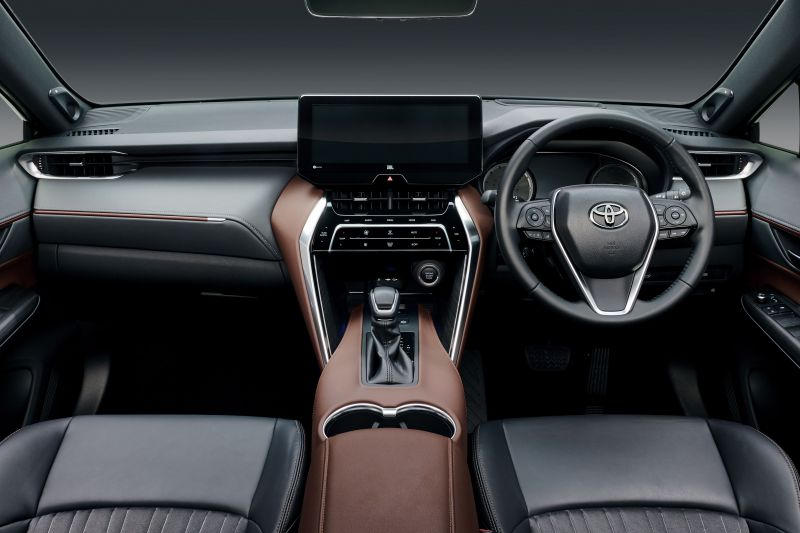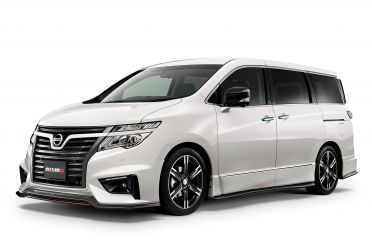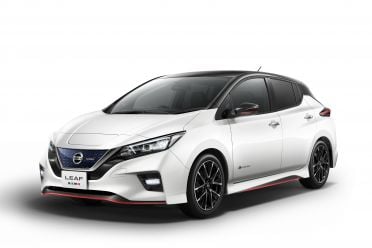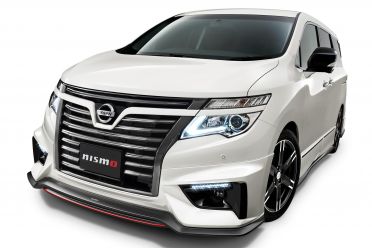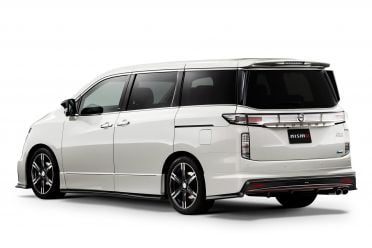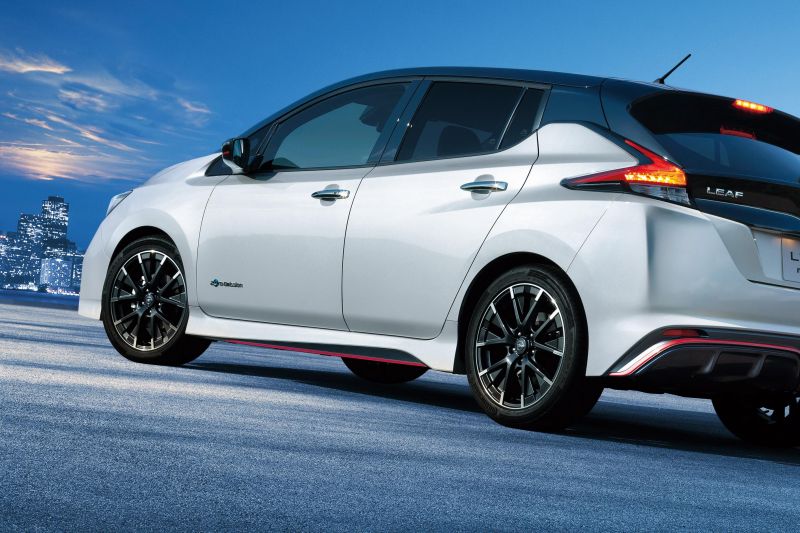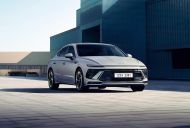There was a time not too long ago when the Japanese domestic market teemed with tantalising forbidden fruit.
There were four-wheel drive, turbocharged versions of familiar nameplates, as well as a plethora of rear-wheel drive sedans.
Over the past decade or two, however, the Japanese market has seen a significant rationalisation. That doesn’t mean there isn’t precious unobtanium for us to lust after though, as you’ll see.
Mitsuoka Rock Star
If you haven’t heard of Mitsuoka, you’re in for a surprise. For several decades, the Japanese coachbuilder has been building garish, retro-styled and sometimes horrifying bodies for mainstream Japanese vehicles.
It’s all in good (kitsch) fun, mind you, and some of them are almost cute – take the Viewt, for example, which weds a 1960s Jaguar-esque face to a Nissan Micra. The less said about vehicles like the Galue and Orochi, though, the better.
You can decide if the Mazda MX-5-based Rock Star falls into either the charming or alarming category. It features a 430mm longer body that’s clearly an homage to the C2-series Chevrolet Corvette Stingray. In classic American fashion, there are even raised letter BF Goodrich tyres for the 15-inch chrome-finished wheels.
You won’t find a V8 engine under that bonnet, however. Instead, there’s the MX-5’s entry-level, naturally-aspirated 1.5-litre four-cylinder engine, producing 97kW of power and 152Nm of torque and mated to either a six-speed manual or six-speed automatic transmission.
The interior, too, is identical to the MX-5 but for the addition of some stitching and exterior colour-matched trim pieces.
If you think this Rock Star has the right stuff to go platinum, take a look at the price. You’ll pay a handsome premium for Mitsuoka’s restyling, with prices starting at ¥4,785,000 (A$65,353) – around $30,000 more than an entry-level MX-5.
Mitsuoka said upon the Rock Star’s introduction in 2018 that it would build only 200 of them. If you miss out and have even more money to burn on a retro re-body of an MX-5, Mitsuoka will also sell you the Himiko.
For an extra $5,000, it features a melange of European styling cues and a long, long bonnet but is otherwise identical inside and underneath.
Toyota Century
It’s hard for us Australians to wrap our heads around the idea of a flagship luxury sedan wearing Toyota badges that’s available for purchase only by invitation and comes with cloth seats.
Japanese readers will be all too familiar with this concept, though, as Toyota has sold the Century since 1967.
The first generation lasted thirty years and the second for twenty. The third generation, introduced in 2018, was the first Century without a V12 engine. Instead, it’s powered by a 5.0-litre hybrid V8 engine with a total system output of 317kW.
Starting at ¥19,962,963 (A$271,611), the Century is by far the priciest Toyota and is popular with titans of industry. It’s more expensive, too, than any model in the Lexus range, which was only introduced to the Japanese market in 2005.
It’s been in a class of its own, too, since Nissan wrapped production of its President in 2010. In fact, perhaps the only logical rival to the Century is a Rolls-Royce or a Bentley; the four-seat Century is sized similarly to the Bentley Flying Spur.
Toyota’s been careful not to change too much about the Century visually. That was the fatal error that befell its former rival the President, which became too clearly a relation to the Nissan Cima/Infiniti Q45. Instead, to even a layperson, the latest Century is quite clearly a successor to the 1967 model.
There’s exquisite detail throughout, from the hand-engraved phoenix emblems that reportedly take six weeks to make to the seven layers of paint used to finish the vehicle.
Rear seat occupants enjoy an 11.6-inch entertainment system, 20 speakers, and a 7.0-inch touchscreen to control the audio, climate, seats and curtains.
The left rear seat features massaging and a foot rest. After all, those in the back seat must be treated like royalty – that’s precisely the point of the Century.
Toyota Crown
If you’re a high-powered executive but your budget doesn’t extend to a Century – or your invitation to buy one was, ahem, lost in the mail – then perhaps a Crown may be to your liking?
The Crown nameplate has been in constant production since 1955 and has been applied to sedans, coupes, wagons and even utes.
The latest, fifteenth generation of Crown is available only as a sedan and uses the new rear-wheel drive N version of the TNGA architecture, also underpinning the shapely new Mirai (but sadly not the new Lexus IS).
The V8 and inline-six engines disappeared a few generations ago, with the latest Crown offering a choice of 2.0-litre turbocharged and 2.5-litre hybrid four-cylinder and 3.5-litre V6 hybrid powertrains.
Toyota dominates the large sedan market in Japan, with Mazda and Mitsubishi having withdrawn and Nissan fielding only the dated Fuga and Cima.
Nevertheless, it was only the 26th best-selling passenger car in Japan last year as the market moves away from large sedans – the Century and Crown are the only remaining large Toyota sedans in Japan following the recent discontinuation of the Mark X.
The current car has also consolidated the previous Crown and Crown Majesta models under a single Crown line (the unrelated, 1995-vintage Crown Comfort taxi was also discontinued). Fear not, though, lovers of variety: there are still 21 variants to choose from.
Daihatsu Taft
Daihatsu may have left the Australian market in 2006 but the company does a roaring trade in its home market thanks largely to kei car sales. Suzuki and Daihatsu were the third and fourth best-selling brands in Japan last year, behind only Toyota and Honda.
Historically, the Japanese government has strongly encouraged consumers to buy kei cars through taxation and insurance incentives, while also specifying maximum dimensions and power figures for these vehicles.
In 2014, it government significantly reduced these incentives to encourage its domestic automakers to build cars more suitable for export – after all, kei cars don’t sell terribly well outside of Japan.
Currently, only Daihatsu, Honda, Mitsubishi and Suzuki build their own kei cars, and the other brands simply rebadge these.
According to Best Selling Cars, Daihatsu was the biggest seller of kei cars in Japan last year with 615,240 sales. That number doesn’t include its latest model, the Taft.
Closely resembling the Waku Waku concept car from last year’s Tokyo show and borrowing its name from the predecessor to the old Rocky four-wheel drive, the Taft features a 658cc three-cylinder engine producing just 38kW, or 47kW in turbo guise, and mated to a continuously-variable transmission.
In the Japanese spirit of almost every vehicle having an all-wheel drive variant, there’s an AWD Taft. Even so equipped, this little box weighs just under 900kg.
Suzuki Wagon R Stingray
With kei cars accounting for 40 per cent of Japanese market sales, there’s a wide range of them across the Japanese brands. Daihatsu and Suzuki, for example, each sell 11 different kei model lines.
A lot of them are peculiar-looking, upright boxes, which allows their designers to squeeze in maximum interior space for their minuscule dimensions.
As most follow this tall-boy template, designers often try to distinguish them from rival offerings through the use of garish, oversized grilles. Some kei cars, however, are more tasteful.
This kei car is known as the Wagon R Stingray. We can’t imagine Chevrolet is too happy with that nomenclature; Suzuki borrowed the name from a sporty version of its 1970 Fronte, though again that application followed Chevrolet’s introduction of the name.
It’s one of the pricier options in Suzuki’s kei range, with prices starting slightly higher than those of the Taft at ¥1,501,500 (A$20,500).
A slightly sportier option than the regular Wagon R, it boasts headlights that look like they’ve been stolen from a Cadillac, eye-catching colours (Moonlight Violet Pearl, anyone?) and a mild-hybrid option.
Would it sell well here? We doubt it. After all, the Wagon R was sold here before, from 1997 until 1998.
Like its similarly short-lived rival, the 1997-99 Daihatsu Move, it was a flop and that was even with a slightly larger engine (a 1.0-litre three-pot) and wider dimensions than its JDM kei counterpart.
Daihatsu Copen
Not all kei cars are strangely-styled boxes. Case in point: the Daihatsu Copen.
The first-generation Copen was sold here in Australia before Daihatsu’s withdrawal. The second-generation model, introduced in 2014, features more aggressive styling than its cutesy predecessor.
If you loved the happy little baby buggy look of the first generation, however, Daihatsu offers the similarly-styled Copen Cero which also comes as a coupe.
Last year, the Copen received the Gazoo Racing treatment. It’s only a warm GR Sport, so as not to run afoul of kei class requirements, so the turbocharged 658cc three-cylinder engine still produces only 47kW of power and 95Nm of torque – just enough to haul 850-870kg of Copen around.
It’s mated to either a five-speed manual or Daihatsu’s Super Active Shift continuously-variable transmission with seven simulated gears.
Though it’s no more powerful, the Copen GR Sport – sold under both the Daihatsu and Toyota nameplates – features some revisions to improve handling, including a front brace and retuned shocks and springs.
Toyota’s also added Recaro sports seats and a Momo steering wheel, plus distinctive forged aluminium BBS wheels.
It’s priced at ¥2,380,000 (A$32,000) which, not accounting for inflation, is almost identical to the retail price of the Copen when it was last sold here. If you want this latest roadster, though, you’ll have to import one.
Honda S660
If the Copen catches your eye, the S660 should stop you dead in your tracks. It’s another kei roadster like the Copen with an almost identical engine, but that engine is mounted midship – like an NSX, in fact, except that car produces almost ten times as much power. It’s also rear-wheel drive, unlike the front-wheel drive Copen.
First introduced in 2015, it weighs slightly less than the Copen (830-850kg) thanks in part to its soft top. It also has a six-speed (instead of five-speed) manual transmission as standard, though like the Copen a CVT is optional.
With mini-NSX styling and 50:50 weight distribution, it’s a joy to both look at and to drive. Unfortunately, a rumoured export model – packing a larger engine – never eventuated.
Toyota RAV4 PHV/Prime
The Toyota RAV4 Hybrid has seen waiting lists in Australia of more than six months. One wonders how long the waiting lists would stretch for its plug-in hybrid counterpart.
The plug-in hybrid RAV4 – called the RAV4 PHV in Japan and RAV4 Prime in North America – features a naturally-aspirated 2.5-litre four-cylinder hybrid powertrain and all-wheel drive like the RAV4 Hybrid but features more powerful electric motors and a larger, 18.1kWh lithium-ion battery pack.
This gives it a combined system output of 225kW, while it can do the 0-100km/h dash in just 6.2 seconds. That means it’s faster and more powerful than even the third-generation RAV4 V6. However, it also has an electric-only range of 62km.
These are some impressive figures which, when you consider how popular the RAV4 Hybrid is, should make bringing the PHV here a no-brainer. Alas, we’re still waiting for Toyota to confirm an Aussie introduction.
Toyota Harrier
The Harrier slots in above the RAV4 in Toyota’s SUV range in Japan. It started as the JDM counterpart to the Lexus RX but diverged with its third generation, moving from the RX’s K platform to the New MC underpinnings of the RAV4.
The fourth-generation model was revealed this year, moving to the TNGA-K platform of the latest RAV4 and upcoming Kluger.
The previous Harrier was only sold in Japan and a handful of Asian markets, while the latest model is now going to be exported to the US in hybrid form where it’ll dust off the Venza nameplate, last used on a Camry-based SUV.
This might just be one of the best-looking Toyota SUVs ever, with clean lines, a striking, full-width tail light assembly, and an upscale interior. Unfortunately, the Harrier has yet to be confirmed for Australia.
Nissan Elgrand Nismo and Leaf Nismo
Nissan’s Japanese model range is largely dated. For example, it still sells the previous generation Micra, Sentra and Altima as the March, Sylphy and Teana, respectively, while the decade-old Infiniti Q70 lives on as the Nissan Fuga and Cima.
The Elgrand featured here is just as old, dating back to 2010.
While Toyota offers its rival Alphard in both a hybrid, all-wheel drive model and a V6, front-wheel drive model – plus GR Sport versions of its smaller Voxy and Noah vans – it doesn’t offer a package quite like the Elgrand Nismo. And though electric cars can offer decidedly sports car-like performance numbers today, the Leaf Nismo stands out as an outwardly sporty option.
Both these models are part of a Nismo-fettled line-up that ranges from the March to the GT-R.
The Nismo option for the Elgrand bundles a firmer suspension tune, a sports muffler and 19-inch alloy wheels, and is available with either naturally-aspirated 2.5-litre four-cylinder or 3.5-litre V6 engines and either front- or all-wheel drive.
For the Leaf, the Nismo team made a raft of changes from retuned shock absorbers and power steering to a retuned engine computer for quicker acceleration.
There’s also an aerodynamic body kit and unique 18-inch alloy wheels, with an Alcantara-wrapped steering wheel and carbon fibre trim inside.
While the Japanese market isn’t as abundant with forbidden fruit as it once was, that isn’t just because cars like the fierce Mitsubishi Legnum VR-4 and spicy Nissan Pulsar GTI-R have gone to that great scrap heap in the sky.
Consider that cars that were for a time off-limits to Australians – like the Nissan GT-R and Toyota Supra – can now be found in local showrooms. Hurrah! For everything else, though, you’ll just have to wait until it’s on the SEVS list.

